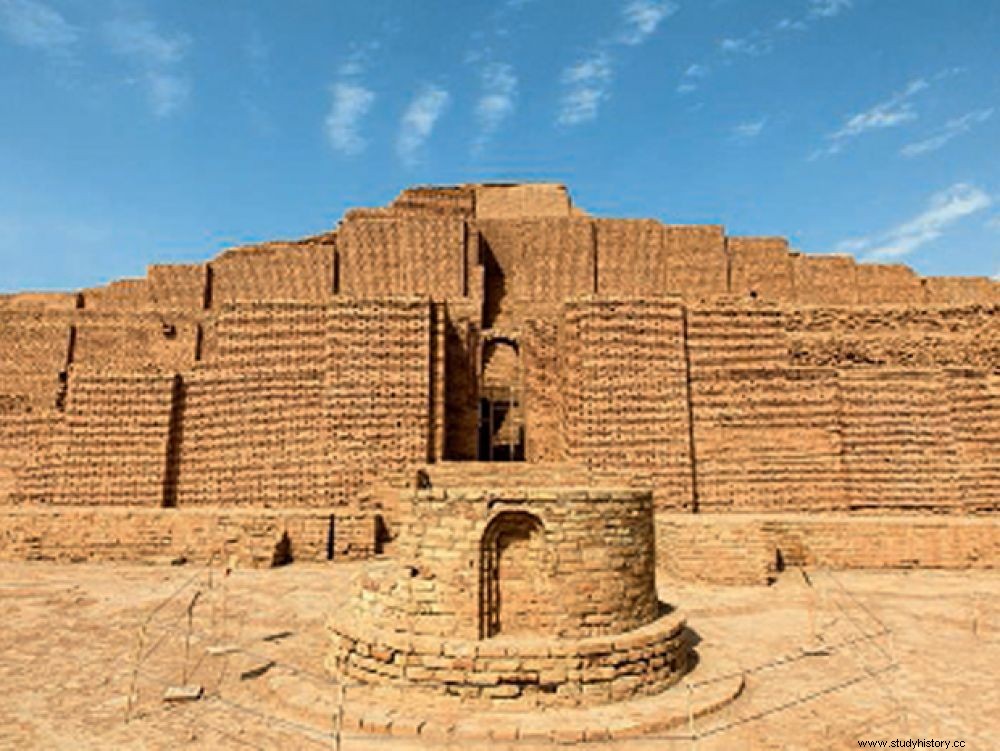The ziggurats are imposing buildings built between 2,100 and 600 BC by the Mesopotamian rulers.

The ziggurat of Tchogha Zanbil, in the extreme south-west of Iran, dated 1300 BC, is the best preserved of this type of building.
"In the middle stands a massive tower, one stadium long and wide, topped by another tower supporting a third, and so on..." We owe to the Greek Herodotus (5 e century BC) one of the first descriptions of the ziggurat, that of Babylon, which inspired the myth of the Tower of Babel. These imposing buildings built between 2,100 and 600 BC by the Mesopotamian rulers all follow the same principle:vast superimposed terraces, set back from each other. Some, like those of Ur or Uruk, in present-day Iraq, had stairs.
The set could reach 70 meters in height
As for the others, according to the specialists, one reached their summit from neighboring buildings. The set could reach 70 meters in height. To ensure the stability of the building, the solid mass was composed of raw bricks - millions! - laid alternately flat and on edge. Bitumen, used as mortar, ensured waterproofing; and rainwater was evacuated by a system of gutter drains. The art of ziggurats is accompanied by other innovations:ventilation ducts penetrating the interior of the massif to dry it out, and a facing of baked bricks protecting all of the weather. In Uruk, moreover, reeds formed mats interposed between the layers of bricks as well as anchorages integrated into the masonry, with the aim of reinforcing the cohesion of the building.
"Ziggurats are part of vast religious complexes"
"The ziggurats are part of vast religious complexes" , observes archaeologist François Desset (CNRS/University of Tehran). They were certainly crowned by a temple, but none of them is well enough preserved for us to be able to say this with certainty... And a fortiori find out more about the ceremonies that took place there.
By Sylvie Gruszow
This article is from the special issue of Sciences et Avenir "The science of builders", published in July/August 2019.
